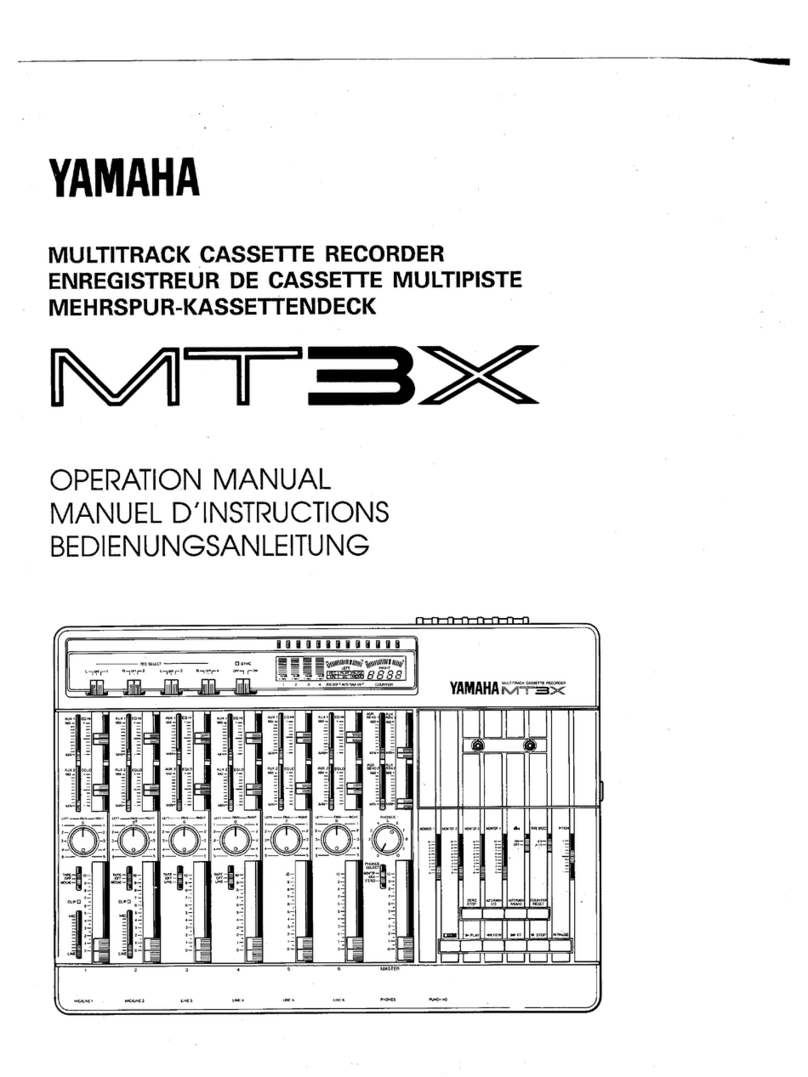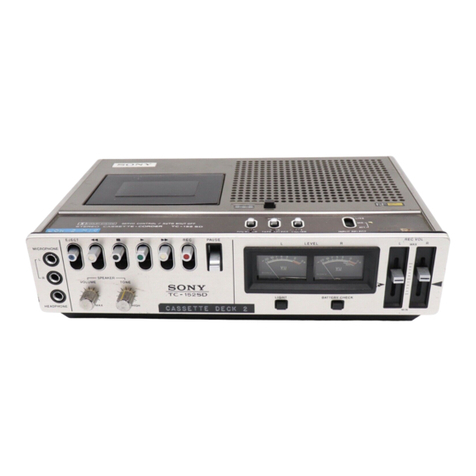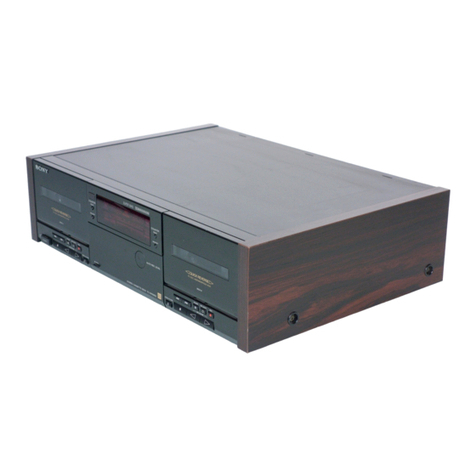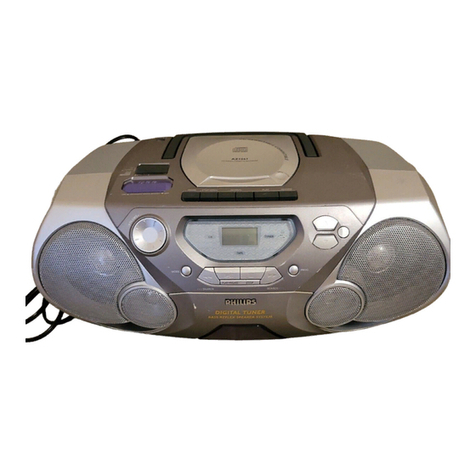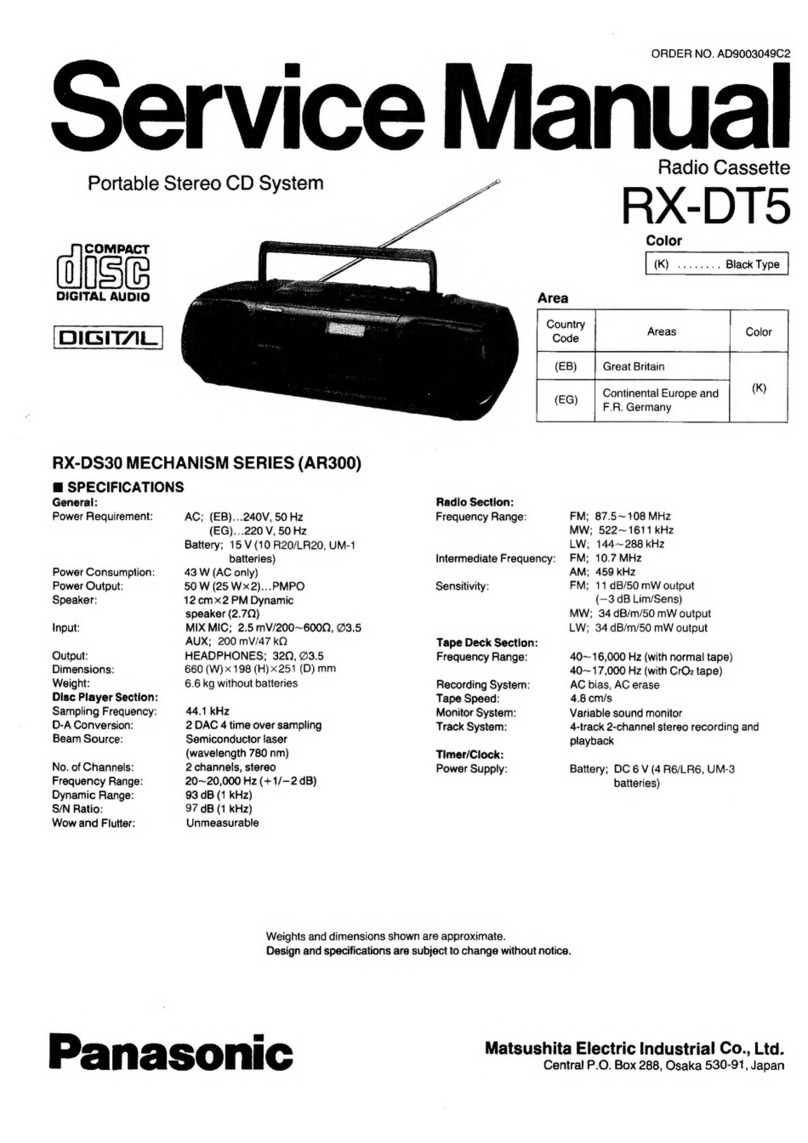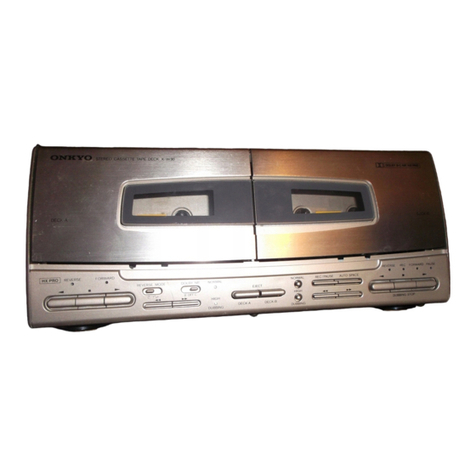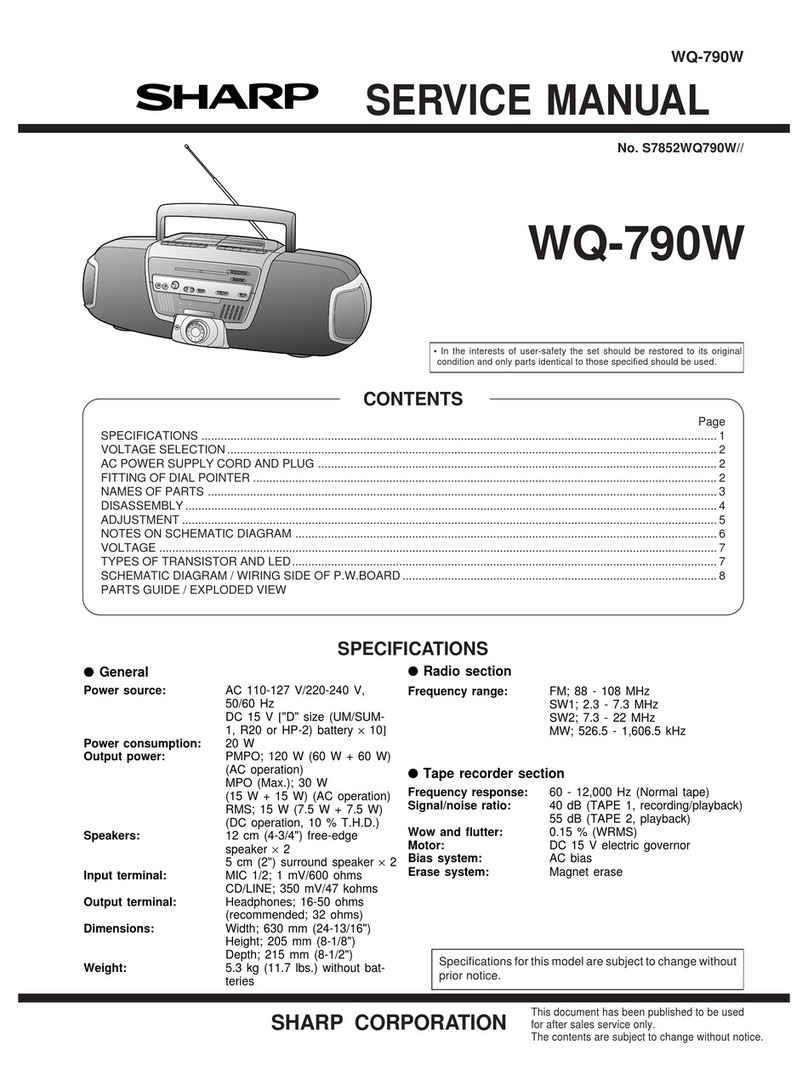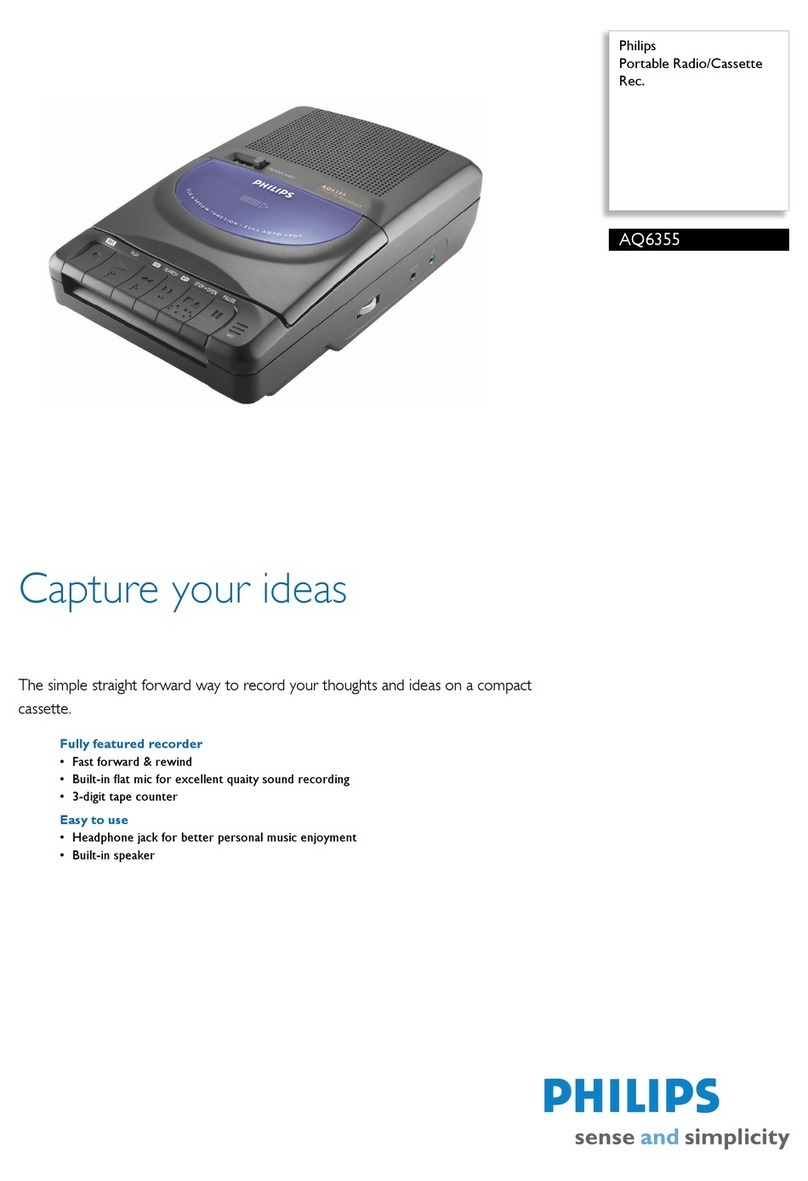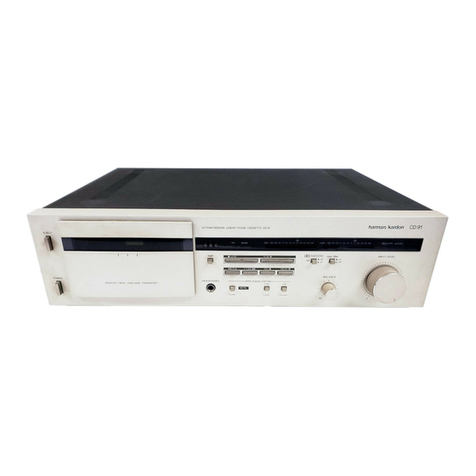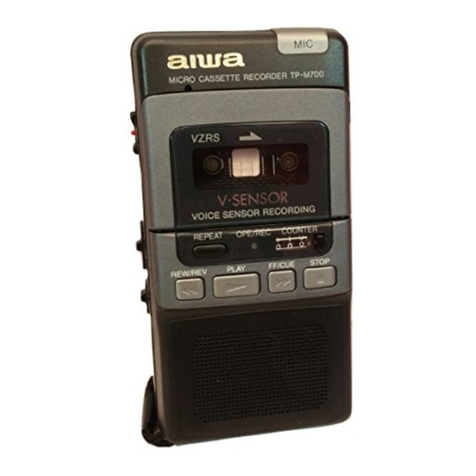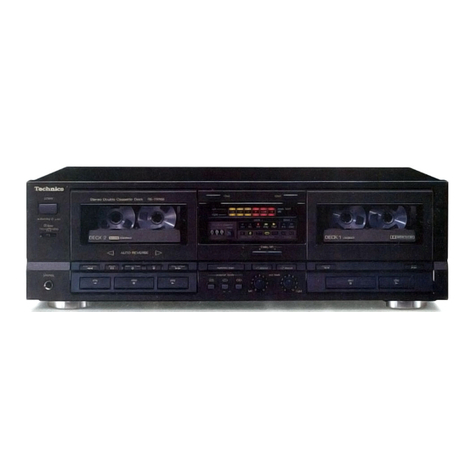BMW Clarion PU-9203A User manual

Cc
Clarion
.
CATS
(Computer
Anti-Theft
.
OPERATION
...............0000..
PU-9203A
Owner’s
guide
Manuel
de
lutilisateur
Bedienungsanleitung
FM-MPX/MW/LW
RADIO
CASSETTE
COMBINATION
WITH
REMOTE
CONTROL
UNIT
2aF
COMBINAISON
RADIO-CASSETTE
FM-MPX/PO/
GO
AVEC
UNITE
DE
TELECOMMANDE
UKW-MPX/MW/LW
RADIO-CASSETTEN-
KOMBINATION
MIT
FERNBEDIENUNG
System)
............
WO
nema
nec
encetenceneasees
‘a
CATS
{Systeme
anti-vol
commandé
par
ordinateur)
...........
3
«
FONCTION
............
eee
.
CATS
(Computer-Diebstahiverhiitungssystem)
........
.«
BEDIENUNG
.............0000...
.
VORSICHTSMASSREGELN
.
ANSCHLUSSE
..................
.
CATS
(Sistema
antifurto
computerizzato)
...........
.»
FUNZIONAMENTO
............
1.
CATS
(Computergestuurd
anti-diefstal
systeem)
....
@
2.
BEDIENING
...0........0.cccccccceccseeseecenseenees
®
cmp}
VOORZORGSMAATREGELEN
...................
®
4.
KABELAANSLUITING
........0.0:.:ccccccceceees
@
1.
CATS
(Sistema
computerizado
antirrobo)
..........
®@
2.
OPERACION
.0.......ccccccccscccccccseveveceecees
®@
3.
PRECAUCIONES
.................cccccceceeeeeersenes
®
4.
CONEXIONES
.........0c:cccccccccssseseeeeeereeees
@
1.
CATS
(Computer
Anti-Theft
System)
.........
56)
2.
HANDHAVANDE
..........00..cccccceceeeeeeeeeees
@
3.
FORSIKTIGHETSATGARDER
.....................
®
4.
ANSLUTNINGAR
............0...c.ccecccceescseeeees
@
®
DIE
DEUTSCHE
BUNDESPOST
INFORMIERT
...........
@
5.
SPECIFICATIONS/SPECIFICATIONS/TECHNISCHE
DATEN
.........
@
6.
INSTALLATION/INSTALLATION/EINBAU
...............
@
2.
OPERATION
(Front
View)/FONCTION
(Vue
de
Face)/
BEDIENUNG
(Ubersicht)
....................ccccccccsecencseeeees
@
7.
FEATURES/CARACTERISTIQUES/AUSSTATTUNGSMERKMALE
.............
@.

The
radio
will
be
rendered
inoperative
if
it
is
removed
or
if
the
radio
power
is
disconnected
during
servicing
or
for
any
other
reason.
The
only
way
to
make
your
radio
work
again
is
by
entering
a
special
four-digit
electronic
lock-out
code
which
only
you
know.
In
your
storage
compartment
(or
in
the
carton
box
of
the
radio)
you
will
find
an
Owner
Identi-
fication
Card
attached
to
a
card
carrier
on
which
your
computer
anti-theft
system
code
and
other
important
information
are
recorded.
Your
card
also
explains
the
step-by-step
code
re-entry
pro-
cedures
previously
outlined
in
English.
When
you
have
transferred
the
owner
identifica-
tion
information
from
your
card
carrier
to
your
card,
place
the
card
in
your
wallet.
Do
not
leave
it
in
your
storage
compartment
where
it
can
fall
prey
to
vandals.
File
the
card
carrier
with
your
other
important
documents,
where
it
will
not
be
available
to
anyone
except
you.
If
you
look
at
your
card
you
will
see
that
your
Radio
Part
Number
has
already
been
recorded
on
it.
Be
sure
to
record
your:
(From
the
top
line)
M@
PU-9203A
(Already
printed)
+»
«
«
(Radio
Part
Number)
@
(Radio
Serial
Number)
e
(Electronic
Lock-out
Code
Number)
@
(Vehicle
Identification
Number)
e
(Stamped
on
Chassis)
(Theft
I.D.
Number=Steel
Plate=)
*
*
*
©
on
to
your
card
before
placing
it
in
your
wallet
or
other
safe
place.
If
you
lose
your
Owner
Identification
Card,
contact
your
BMW
dealer
for
a
replacement.

(See
page
@)
@
RADIO
CASSETTE
COMBINATION
@
Power
Switch
(ON),
Remote
Switch
(PUSH
REM),
and
Volume
Control
(VOL)
Knob
Balance
Control
Knob
(BAL)
BASS
Control
Knob
Treble
Control
Knob
(TREB)
Program
Button
(4)
Preset
Switches
(1,
2,
3,
4,
5,
6)
Cassette
Tape
Slot
Door
FF/REW
and
Eject
Button
(
¥,
4,
()
ST
ON
Switch
LMU
Band
Switch
(BAND)
VF
Switch*
Tuning
Mode
Switch
(TM)
NL
Indicator
and
CATS
Indicator
Noise
Limiter
Switch
(NL)
Seek/Manual
Tuning
Switch
(Y,
A)
Digital
Indicator
Display
@
REMOTE
CONTROL
UNIT
@
Seek/Manual
Tuning
Switch
on
Remote
Contro!
Unit
®
LED
Indicator
for
Remote
Functions
©
Volume
Control
Switch
on
Remote
Control
Unit
M@LCD
DIGITAL
DISPLAY
@)
VF
Indicator*
®
SK
Indicator*
©
ST
Indicator
@
ST
ON
Indicator
@©
DX
Indicator
@
Manual
Indicator
(MANU)
@
®
@
QOOQOSOLOOHOOOOHO®
Channel
Indicator
Digital
Display
(Frequency)
Band
Indicator
(LW/MW/UKW)
@®
Program
Indicator
(
Wa
)
%:
The
VF
switch
can
be
used
in
countries
which
have
traffic
informa-
tion
stations
such
as
West
Germany,
Switzerland
and
Austria.
In
other
countries,
keep
the
switch
off.
CATS
This
unit
features
a
Computer
Anti-Theft
System
(CATS)
to
prevent
your
set
from
a
possible
theft.
The
following
opera-
tions
are
necessary
in
order
for
your
set
to
start
functioning.
Follow
the
operations
below
to
turn
on
your
set.
*Turning
on
Your
Set
(Releasing
CATS)
-
®.
©,
©),
©,
@®
.
1.
Make
necessary
wire
connections
(watch
for
wrong
con-
nections)
2.
Turn
on
the
set
by
turning
the
power
switch
clockwise.
3.
Input
your
CATS
code
number
on
the
card
by
pressing
the
numbers
on
the
Preset
switches.
The
input
number
will
show
on
the
digital
display.
Input
your
CATS
number.
The
input
number
will
show
on
the
LCD
(digital
display).
When
the
number
is
correct,
the
display
will
change
to
a
radio
frequency.
=EMAO<H
ANMIA-—AZP
DMACVEON

4.
When
the
correct
CATS
code
number
is
input,
the
digital
display
will
change
to
a
radio
frequency
and
the
set
is
ready
to
operate.
If
the
number
is
incorrect,
the
set
will
not
start
func-
tioning.
Note:
Once
the
set
is
released
from
CATS,
another
input
of
the
CATS
code
is
not
necessary
unless
the
set
has
been
disconnected
from
the
battery.
*In
Case
You
Have
Input
an
Incorrect
Code
Number
=
An
incorrect
code
number
cannot
turn
on
the
set.
Follow
the
instructions
below
to
turn
on
the
set.
(If
you
noticed
the
mistake
half-way,
complete
inputting
by
entering
any
num-
ber
to
have
four
digits
on
the
display,
then
follow
the
instruc-
tions
below).
1.
Keep
pressing
the
ST
switch
for
three
seconds.
The
incor-
rect
number
on
the
display
will
disappear.
2.
Input
the
correct
CATS
code
number.
*CATS
Indicator
=
©, ©,
@
This
set
has
a
CATS
indicator
for
warning
purposes.
The
following
operations
will
actuate
the
CATS
indicator.
(For
this
function
to
work,
make
sure
the
set
is
connected
to
the
battery.)
1.
Turn
the
power
switch
off
2.
Press
the
ST
switch
3.
The
CATS
indicator
will
start
blinking
When
you
want
to
turn
off
the
CATS
indicator,
press
the
ST
switch
for
three
seconds
with
the
power
switch
off
until
it
stops
blinking.
Note:
To
prevent
a
possible
theft,
an
instant
interruption
of
permanent
current
will
cause
the
set
to
enter
the
CATS
mode
(you
need
to
input
the
code
number
to
turn
on
the
set
again.)
M@
CASSETTE
TAPE
PLAYBACK
*
Starting
©
©,
@
©.
MO
Turn
the
power
switch
clockwise
to
turn
on
the
power
and
to
receive
a
radio
broadcast.
By
inserting
the
cassette
tape,
the
program
indicator
will
illuminate
and
the
tape
will
start
playing.
*
Stopping
=
@
The
cassette
tape
is
ejected
when
the
eject
button
is
pressed,
and
the
operation
switches
to
radio
reception.
*
Program
selection
=
©
1)
Automatic
selection
When
one
side
of
the
tape
comes
to
the
end,
the
other
side
of
the
tape
starts
playing
automatically
for
con-
tinuous
playback.
2)
Manual
selection
When
the
program
button
is
pressed,
the
programs
on
the
other
side
of
the
tape
can
be
freely
selected
with-
out
stopping
the
tape.
*
FF/REW
(with
lock)
=
@,
@
When
the
button
showing
the
same
direction
as
the
illu-
minated
program
indicator
is
pressed,
the
tape
advances
at
high
speed.
When
the
button
with
the
opposite
direction
is
pressed,
the
tape
is
rewound
at
high
speed.
To
release
the
lock
1)
Press
the
button
with
the
opposite
direction
lightly.
2)
Press
the
program
button.
(After
release,
play
back
starts
of
the
reverse
side
of
the
tape).
3)
The
lock
is
released
when
the
tape
comes
to
the
end.
(After
automatic
release,
tape
play
back
starts).
*
Volume
control
=
@
Turn
the
volume
control
knob
clockwise
to
increase
the
volume.

*
Bass
control
=
©
Press
the
bass
control
knob,
and
the
knob
will
Pop
up
so
that
the
bass
can
be
controlled.
Next,
turn
the
knob
clockwise
from
the
click-stop
position
to
emphasize
the
bass,
and
turn
it
counterclockwise
to
de-emphasize
the
bass.
After
adjustment
is
made,
push
the
knob
back
to
its
Original
position.
*
Treble
control
»-
©
Press
the
treble
control
knob
and
the
knob
will
Pop
up
so
that
the
treble
can
be
controlled.
Next,
turn
the
knob
clockwise
from
the
click-stop
position
to
emphasize
the
treble,
and
turn
it
counterclockwise
to
de-emphasize
the
treble.
After
adjustment
is
made,
push
the
knob
back
into
its
Original
position.
*
Balance
control
ss-
Press
the
balance
control
knob
and
the
knob
will
pop
up
so
that
the
balance
can
be
controlled.
Turn
the
knob
clockwise
from
the
click-stop
position
to
increase
the
volume
of
the
right
speakers,
and
turn
it
counterclockwise
to
enhance
the
sound
of
the
left
speak-
ers.
After
adjustment
is
made,
push
the
knob
back
into
its
Original
position.
*
Noise
limiter
switch
(NL)
ss-
®,
@
Press
the
noise
limiter
switch
(NL)
during
tape
playback.
The
NL
indicator
will
illuminate
and
hiss
noise
will
be
decreased.
*
Program
memory
system
When
playback
is
interrupted
half-way
by
an
ejection
of
the
tape
or
when
the
power
is
turned
off
and
later
re-
sumed,
the
tape
will
start
playing
in
the
same
direction
as
it
was
playing
before.

m@
LW/MW/FM
BROADCAST
RECEPTION
*
Power
switch
=
@
Turn
the
power
on
by
turning
the
power
switch
clockwise
for
radio
broadcast
reception.
%*
LW/MW/FM
band
switch
(BAND)
=
G@),
@
Each
time
the
LW/MW/FM
band
switch
(BAND)
is
pressed,
the
radio
frequency
band
will
be
switched
in
the
following
sequence:
FM
(UKW)—
MW-
LW-
FM
(UKW),
and
so
on.
The
radio
frequency
band
is
shown
on
the
band
indicator
(L/M/U).
*
Tuning
mode
switch
#
©,
®,
©
When
this
switch
is
pressed,
“MANU”
will
appear
on
the
LCD.
Now
press
the
up
(A)
or
down
(7%)
side
of
the
tuning
switch
to
start
manual
tuning.
The
frequencies
will
change
in
steps
of
25kHz
for
FM,
9kHz
for
MW,
and
1kHz
for
LW.
The
mode
will
automatically
return
to
the
seek
tuning
mode
5
seconds
after
the
operation
is
completed.
*
Seek
tuning
switch
(Auto
DX/Local)
=
©, ),
©
Automatic
tuning
is
possible
by
pressing
this
switch.
Pressing
the
upper
(lower)
side
of
the
switch
will
cause
the
tuner
to
search
for
broadcasting
stations
at
higher
(lower)
frequencies
and
to
tune
in
the
next
station.
The
frequency
goes
up
(goes
down)
in
iricrements
of
50kHz
for
FM,
9
kHz
for
MW
and
1
kHz
for
LW.
When
the
Seek
tuning
switch
is
pressed
for
the
first
time,
stronger
signal
stations
are
searched
using
the
Local
sensitivity
setting.
After
it
returns
to
the
frequency
from
which
the
Seek
started
initially,
it
will
start
searching
for
weaker
signal
stations
using
the
DX
sensitivity
setting
(the
DX
indicator
will
illuminate)
(Fig.
1).
indicates
station
being
received.
bee
eae
“Digital
display”
‘:
ES
87.5MHz
(98.0)
108MHz
=
DX
indicator
illuminates
Fig.
1
Press
i
seek
tuning
switch
Local
an
L907
_|
DX
indicator
%
illuminates
a
8
87.
=
Reema
(98.0)
108MHz
|
*
ween
sree
aan
seen
Fig.
2
Tuning
using
the
seek
switch
for
the
first
time
after
the
execution
of
seek
tuning
operation.
>
eS
Ee:
iC
it
il
rit
87.5MHz
(98.0)
108MHz
Tuning
using
the
seek
switch
for
the
second
time
after
the
execution
of
seek
tuning
operation.
DX
indicator
+
illuminates
Local
rN
ONT
1
2
OM
CTEOD
DX
Stop
enn
TNT
+ —
AZ
DMC
VEO
Fig.
3

Pressing
the
Seek
tuning
switch
again
during
Local
sensi-
tivity
seek,
automatically
engages
the
DX
sensitivity
set-
ting
(the
DX
indicator
will
illuminate)
and
starts
the
seek
again
from
the
frequency
initially
received
(Fig.
2).
Pressing
the
Seek
tuning
switch
once
again
during
DX
sensitivity
seek
automatically
cancels
the
seek,
and
the
unit
will
stop
at
the
frequency
initially
received
(Fig.
3).
These
figures
indicate
seeking
is
in
upward
direction.
As
for
downward
direction,
the
arrows
in
these
figures
will
reverse.
Note:
By
pressing
the
lower
side
of
the
switch
(for
down-
ward
seek)
during
upward
seek,
downward
seek
will
Start
from
the
frequency
initially
received.
*
Preset
switches
ows
®)
It
is
possible
to
program
six
stations
for
each
LW,
MW,
and
FM
band.
Each
preset
switch
has
two
functions.
It
functions
differently
according
to
how
long
it
is
pressed
down.
©
Press
the
preset
switch
for
less
than
two
seconds
to
actuate
the
Station
Recall
function.
®
Press
the
preset
switch
for
more
than
two
seconds
to
actuate
the
Station
Memory
function.
1)
The
procedure
for
the
Station
Memory
function
is
as
follows:
Digital
display
Audio
signal
Key
operation
cof
1.0
oO
|
a
Tune
in
the
desired
station
to
be
memorized.
eMw<n
4M
T-4-
72>
DMC
vz00
Press
the
preset
switch
(1
to
6)
.
corresponding
to
the
preset
channel
into
Sa
which
the
wanted
station
is
to
be
memorized.
While
this
operation
is
being
carried
out,
the
audio
output
will
be
muted,
and
the
corresponding
channel
indicator
will
illuminate.
q
th
Préss
down
the
preset
switch
for
two
seconds
or
more.
a
EE
The
mute
function
will
last
for
approximately
two
seconds,
then
the
J
output
resumes,
which
signifies
that
the
station
has
been
entered
into
the
preset
memory.
r
ll
=o
ce
(hy
Release
Release
the
preset
switch
after
the
mute
function
has
been
cancelled.
Note:
Releasing
the
preset
switch
before
the
mute
function
is
cancelled
will
activate
the
Station
Recall
mode.
Note:
The
Station
Memory
will
not
function
when
the
cassette
player
is
operating.
Channel
indicator
itluminates
2)
The
procedure
for
Station
Recall
function
is
as
follows:
Digital
display
Audio
signal
Key
operation
L875
|)
When
a
preset
switch
is
pressed,
the
audio
output
will
be
muted,
and
the
corresponding
channel
indicator
will
itluminate.
Release
within
two
seconds.
2

Frequency
preset
into
preset
channel
1.
|
Release
within
two
seconds.
When
the
preset
switch
is
released,
the
mute
function
will
be
cancelled
simultaneously
and
the
Station
Recall
function
will
be
activated
automatically.
Note:
Failure
to
release
the
preset
channel
switch
within
two
seconds
will
activate
the
Station
Memory
mode.
Note:
While
playing
a
tape,
channel
4,
5,
and
6
are
not
available
for
Station
Recall.
VF
Switch
=
«,
@,
©
Note:
The
VF
switch
can
be
used
in
countries
which
have
traffic
information
stations
such
as
West
Germany,
Switzerland
and
Austria.
In
other
countries,
keep
the
switch
off.
The
SK
indicator
is
displayed
when
a
traffic
information
station
is
tuned
in
while
receiving
an
FM
broadcast
or
operating
the
cassette
deck
with
the
tuner
in
the
FM
mode
(Band
indicator
“
UKW
”
displayed).
If
the
VF
switch
is
on
(VF
indicator
displayed),
traffic
information
will
be
heard
automatically
from
the
speakers
whenever
broadcast,
even
if
you
are
listening
to
a
tape.
If
the
unit
switches
to
a
traffic
information
broadcast
during
operation
of
the
cas-
sette
deck,
the
tape
stops
automatically.
Tape
playback
continues
when
the
traffic
information
broadcast
is
over.
By
setting
the
VF
switch
to
ON
and
turning
the
volume
down,
you
can
have
the
unit
pick
up
traffic
information
broadcasts
automatically
and
let
you
hear
them
at
a
fixed
volume
level.
Traffic
Information
Cassette
or
Radio
If
you
want
to
tune
in
a
traffic
information
station
during
tape
playback,
set
the
band
to
FM
(UKW)
("
UKW
”
is
displayed
on
the
Band
indicator)
and
press
the
VF
switch.
The
seek
operation
will
start
immediately
in
the
upward
direction,
and
the
nearest
traffic
information
station
will
be
tuned
in.
LJ
}
[=f
=.
>
Cassette
Tape
Playback
Traffic
Information
Cassette
Tape
Playback
e
VF
Auto
Retune
When
the
radio
waves
of
the
traffic
information
station
you
are
presently
listening
to
become
weak,
the
unit
will
automatically
start
seeking
up
in
approximately
25
seconds,
tuning
in
the
first
traffic
information
station
it
finds.

@
REMOTE
CONTROL
UNIT
To
activate
the
remote
control
unit,
press
the
ON/Volume
switch
on
the
radio.
This
will
deactivate
the
rotary
volume
control
of
the
radio
and
an
LED
indicator
®
will
light
on
the
remote
control
unit.
At
this
time
the
remote
control
unit
will
operate
the
volume
and
seek
tuning.
*
Seek
Tuning
Switch
=
©,
®
Seek
tuning
is
accomplished
by
pressing
the
A
or
Y
side
of
the
seek
tuning
switch.
When
the
#@
side
is
pressed,
the
next
higher
clear
station
will
automatically
be
seeked
out.
Use
the
Y
side
to
seek
out
the
next
lower
clear
station.
Distant
seek
tuning
is
accomplished
by
pressing
either
side
of
the
seek
tune
switch
twice.
When
this
is
done,
only
distant
clear
stations
will
be
tuned
into.
*
Volume
Control
Switch
»=-
@,
©
To
increase
the
volume,
press
and
hold
the
“
side
of
the
volume
switch
until
the
desired
volume
level
is
reached.
To
decrease
the
volume,
press
and
hold
the
\v
side
of
the
volume
switch
until
the
desired
volume
level
is
reached.

Store
cassettes
in
their
plastic
cases
when
not
in
use.
2.
Do
not
leave
cassettes
in
your
motorcycle,
particularly
during
warm
weather.
3.
Take
up
any
slack
in
the
cassette
before
playing
it.
4.
Do
not
play
C-120
(or
longer)
cassettes.
The
tape
in
these
cassettes
is
very
thin
and
prone
to
breakage.
5.
If
the
fuse
blows,
replace
it
with
a
7.5A
rated
fuse.
Notice:
Damage
to
cassette
tapes
caused
by
environmental
influences
is
the
largest
cause
of
cassette
player
mal-
function.
Exercise
caution
when
storing/transporting
your
cassette
tapes
in
your
motorcycle.
Warning:
Do
not
change
cassettes
or
channels
while
the
motorcycle
is
in
motion.
Always
keep
both
hands
on
the
handlebars
while
the
motorcycle
is
moving.

SerienmaRig
hergesteilte
Ton-
und
Fernseh-Rundfunkempfanger
mus-
sen
zum
Nachweis
dafir,
da
sie
den
Technischen
Vorschriften
entspre-
chen,
mit
einer
DBP-Prifnummer
gekennzeichnet
sein.**)
Die
DBP-Prif-
nummer
sagt
Uber
die
elektrische
und
mechanische
Sicherheit
und
die
Einhaltung
der
Strahlenschutzbestimmungen
nichts
aus.
Ton-
und
Fernseh-Rundfunkempfanger
dirfen
an
ortsfesten
oder
nicht-
ortsfesten
Rundfunk-Empfangsantennenanlagen,
—
Verteilaniagen
oder
Kabelfernsehanlagen
betrieben
und
im
Rahmen
der
Bestimmun-
gen
uber
private
Drahtfernmeldeanlagen
mit
Drahtfernmeldeanlagen
verbunden
werden.
Auf
demselben
Grundstiick
oder
innerhalb
eines
Fahrzeuges
diirfen
Ton-
und
Fernseh-Rundfunkempfanger
mit
anderen
Geraten
oder
sonstigen
Gegenstanden
(z.
B.
Plattenspieler,
Magnetaufzeichnungs-
und
-Wieder-
gabegeraten,
Antennen)
verbunden
werden,
sofern
diese
Geradte
von
der
Deutschen
Bundespost
genehmigt
sind
oder
keiner
Genehmigung
bedurfen.
Die
raumliche
Kombination
von
Funkanlagen
mit
Ton-
oder
Fernseh-
Rundfunkempfangern
ist
nur
dann
zulassig,
wenn
die
betreffenden
Funk-
anlagen
je
fir
sich
genehmigt
sind.
Mit
Ton-
und
Fernseh-Rundfunkempfangern
diirfen
aufgrund
dieser
Ge-
nehmigung
nur
Sendungen
des
Rundfunks
empfangen
werden,
also
Ubertragene
Tonsignale
(Musik,
Sprache)
und
Fernsehsignale
(nur
Bild-
informationen).
Andere
Sendungen
(z.
B.
des
Polizeifunks,
der
offentli-
chen
beweglichen
Landfunkdienste,
Dateniibertragungen)
dirfen
nicht
aufgenommen
werden.
Werden
sie
jedoch
unbeabsichtigt
empfagen,
so
dirfen
sie
weder
aufgezeichnet,
noch
anderen
mitgeteilt,
noch
fur
ir-
gendwelche
Zwecke
ausgewertet
werden.
Das
Vorhandensein
solcher
Sendungen
darf
auch
nicht
anderen
zur
Kenntnis
gebracht
werden.
Durch
Ton-
und
Fernseh-Rundfunkempfanger
darf
der
Betrieb
anderer
elektrischer
Anlagen
nicht
gestért
werden.
Anderungen
der
Ton- oder
Fernseh-Rundfunkempfanger,
die die
zulassi-
gen
Frequenzabstimmbereiche
der
Empfanger
erweitern,
gehen
ber
den
Umfang
dieser
Genehmigung
hinaus
und
bedirfen
vor
ihrer
Ausfuh-
rung
einer
besonderen
Genehmigung
der
Deutschen
Bundespost.
Wer
aufgrund
dieser
Genehmigung
einen
Ton- oder
Fernseh-Rundfunk-
empfanger
betreibt,
hat
bei
einer
Anderung
der
kennzeichnenden
Merk-
male
von
Ton-
oder
Fernseh-Rundfunksendern
(insbesondere
bei
Ande-
rung
des
Sendeverfahrens
oder
bei
Frequenzwechsel)
die
ggf.
notwen-
dig
werdenden
Anderungen
an
dem
Rundfunkempfanger
auf
seine
Ko-
sten
vornehmen
zu
lassen.
Die
Deutsche
Bundespost
ist
berechtigt,
Rundfunkempfanger
und
mit
ihnen
verbundene
Gerate
darauf
zu
priifen,
ob
die
Auflagen
der
Genehmigung
und
die
Technischen
Vorschriften
eingehalten
werden.
Den
Beauftragten
der
Deutschen
Bundespost
ist
das
Betreten
der
Grund-
stucke
oder
Raume,
in
denen
sich
Ton-
oder
Fernseh-Rundfunkempfan-
ger
befinden,
zu
den
verkehrsiiblichen
Zeiten
zu
gestatten.
Befinden
sich
die
Rundfunkempfanger
oder
mit
ihnen
verbundene
Gerate
nicht
im
Ver-
fugungsbereich
desjenigen,
der
die
Empfanger
betreibt,
so
hat
er
den
Beauftragten
der
Deutschen
Bundespost
Zutritt
zu
diesen
Teilen
zu
er-
médglichen.
iil.
Bei
Funkstérungen,
die
nicht
durch
Mangel
der
Rundfunkempfanger
oder
der
mit
ihnen
verbundenen
Gerdte
verursacht
werden,
kénnen
die
Funk-
me&dienste
der
Deutschen
Bundespost
zur
Feststellung
der
Stérung
in
An-
spruch
genommen
werden.
IV.
Diese
Genehmigung
kann
allgemein
oder
durch
die
6rtlicher
zustandige
Oberpostdirektion
einem
einzelnen
Betreiber
gegeniiber
fiir
einen
be-
stimmten
Rundfunkempfanger
widerrufen
werden.
Ein
Widerruf
ist
ins-
besondere
zulassig,
wenn
die
unter
Abschnitt
Il
aufgefuhrten
Auflagen
nicht
erfullt
werden.
Anstatt
die
Genehmigung
zu
widerrufen,
kann
die
Deutsche
Bundespost
anordnen,
dak
bei
einem
Verstof§
gegen
eine
Auflage
ein
Ton- oder
Fern-
seh-Rundfunkempfanger
au®er
Betrieb
zu
setzen
ist
und
erst
bei
Einhal-
tung
der
Auflagen
wieder
betrieben
werden
darf.
Die
Auflagen
dieser
Genehmigung
kénnen
jederzeit
erganzt
oder
gean-
dert
werden.
Diese
Genehmigung
ersetzt
die
Allgemeine
Ton-
und
Fernseh-Rundfunk-
genehmigung
vom
11.
Dezember
1970,
sie
gilt
ab
1.
Juli
1979.
Bonn,
den
14.
5.
1979
Der
Bundesminister
fiir
das
Post-
und
Fernmeldewesen
Im
Auftrag
Haist
*)
=%)
Siehe
Technische
Vorschriften
fir
Ton-
und
Fernseh-Rundfunkemp-
fanger,
veréffentlicht
im
Amtsblatt
des
Bundesministers
fur
das
Post-
und
Fernmeldewesen.
Fir
ausnahmsweise
noch
nicht
gekennzeichnete,
vor
dem
1.
Juli
1979
errichtete
und
in
Betrieb
genommene
Ton-Rundfunkempfanger
wird
die
Kennzeichnung
nicht
verlangt.

@
RADIO
CASSETTE
COMBINATION
RADIO
SECTION
Tuning
system:
PLL
synthesizer
tuner
Receiving
frequency:
LW
153
to
281kHz
MW
531
to
1,602kHz
FM
87.5
to
108MHz
TAPE
DECK
SECTION
Playback
system:
Auto
reversing
4-track,
2-channel,
2-program
stereo
cassette
tape
playback
(monaural
also
possible)
GENERAL
Power
supply
voltage:
DC
14.4V
negative
ground
Power
consumption:
Less
than
6A
(at
max.
output)
Speaker
impedance:
40x2
Dimensions:
50
mm
182
mm
—
E
£
6
59mm
189
mm
|
Weight:
1.67
kg
SECTION
RADIO
Systéme
de
syntonisation:
Fréquences
recues:
&
COMBINAISON
RADIO-CASSETTE
Tuner
synthétiseur
PLL
GO
153
a
281kHz
PO,
AM
=
531
&
1602kHz
UKW,
FM
87,5
a
108MHz
SECTION
BANDE
CASSETTE
Systéme
de
reproduction:
Reproduction
de
bande
GENERALITES
Voltage
de
l'alimentation:
Consommation:
Impédance
haut-parleurs:
Dimensions:
_5O0mm
Poids:
cassette
stéréo
4
pistes
2
canaux
2
pro-
grammes
a
inversion
automatique
(monaurale
également
possible)
DC
14,4V
moins
a
la
masse
Moins
de
6A
(pour
une
sortie
max.)
4
ohmsx2

@
RADIO-CASSETTEN-KOMBINATION
RADIOTEIL
Abstimmsystem:
Empfangsfrequenzen:
CASSETTENDECK
Wiedergabesystem:
ALLGEMEINE
DATEN
Stromversorgung:
Leistungsaufnahme:
Lautsprecherimpedanz:
Abmessungen:
50
mm
171
mm
59mm
Gewicht:
PLL-Synthesizer
LW:
153
bis
281
kHz
MW:
531
bis
1,602
kHz
UKW:
87,5
bis
108
MHz
Automatische
Bandumkehr,
4-Spur-,
2-KanalStereocassettenwie-dergabe
(monaurale
Wiedergabe
ebenfalls
mdglich)
14,4
V
Gleichstrom,
Minus
an
Masse
Weniger
als
6A
(bei
max.
Aus-
gangsleistung)
4
Ohmx2
182
mm
|
189
mm
|
1,67
kg
@
REMOTE
CONTROL
UNIT/UNITE
TELECOMMANDE/
FERNBEDIENTEIL
Dimensions:/Dimensions:/Abmessungen:
58
mm
45mm
Francais

m
x
=
Unidad
de
contro!
remoto
Fjarrkontroll
Antena
de
UKW/MW/LW
Antenn
for
UKW/MV/LV
Antena
Negro
Antenn
Svart
Rojo/amarillo
Réd/gul
|
i
Apoyo
Amplificador
de
antena
Reserv
Antennférstarkare
Azul
Bia
f=\
LI
Oo
®@
Altavoz
derecho
Héger
hégtalare
UNIDAD
PRINCIPAL
[PU-9203A]
HUVUDENHET
[PU-920
3A]
Amarillo
Gul
[=\
Oo
@®
Altavoz
izquierdo
Vanster
hégtalare
Gris
Gra
Accesorio
Tillbehoér

UKW/MW/LW
Antenna
Antenne
FM/PO/GO
UKW-/MW-/LW-Antenne
MAIN
UNIT
[PU-9203A]
UNITE
PRINCIPALE
[PU-9203A]
HAUPTGERAT
[PU-9203A]
Antenna
Black
Antenne
Noir
Antenne
Schwarz
Gray
Red/Yellow
Gris
Rouge/jaune
Grau
Rot/Gelb
Lh
Fa
=
|
®
Remote
Control
Unit
Backup
oO
®
©
Ground
Accessory
Unité
de
télécommande
Soutien
Masse
Accessoire
Fernbedienteil
Speicherschutz
Masse
Zubehor
Antenna
Amplifier
Amplificateur
d’antenne
Antennenverstarker
Right
Speaker
Left
Speaker
Haut-parleur
droit
Haut-parleur
gauche
Rechter
Lautsprecher
Linker
Lautsprecher

Antenna
UKW/MW/LW
UNITA
P|
IP,
s
UKW/MG/LG
antenne
FEE
ALE
IPU:
22634)
HOOFDEENHEID
[PU-9203A]
Antenna
Nero
Antenne
Rosso/giallo
Marrone
Grigio
Rood/geel
Bruin
Grijs
aa
=
|
Blu
Giallo
Blauw
Geel
iL
(t)
z
Ea
I
i
ol
iO
:
®
Oo
®
Togliete
l’unita
di
comando
Riserva
Amplificatore
antenna
o
Terra
Accessorio
Afstandsbediening
Backup
Antenneversterker
Aarding
Toebehoren
Diffusore
destro
Diffusore
sinistro
Rechter
luidspreker
Linker
luidspreker

@
MOUNTING
THE
TAKE
AWAY
BRACKET
AND
MAIN
UNIT
@
MONTAGE
DU
SUPPORT
DETACHABLE
ET
DE
L’UNITE
PRINCIPALE
-
m@
BEFESTIGUNG
VON
SCHNELLAUSBAUHALTERUNG
UND
GRUNDGERAT
8-Tabs
(Bend)
8-Languettes
(plier)
8-Laschen
(umzubiegen)
Screwdriver
Tournevis
Schraubenzieher
Sems
Screw
Vis
Sems
Schraube
~4x6mm
]
ee
MAIN
UNIT
[PU-9203}
UNITE
PRINCIPALE
[PU-9203]
HAUPTGERAT
[PU-9203]
Mounting
Bracket
Support
de
montage
Einbauhalterung
300-7414-00
Rubber
Gasket
Joint
en
caoutchouc
Gummidichtung
345-4525-00
Sems
Screw
Vis
Sems
Schraube
o4x6mm
Mounting
Bracket
Support
de
montage
Einbauhalterung
300-7413-00
Take
Away
Bracket
Support
détachable
Schnellausbauhalterung
300-7346-01
Audio
Mounting
Bracket
Support
de
montage
audio
Radio-Befestigungshalterung

@
MOUNTING
THE
REMOTE
CONTROL
UNIT
@
MONTAGE
DE
L’UNITE
DE
TELECOMMANDE
m@
BEFESTIGUNG
DES
FERNBEDIENTEILS
Remote
Control
Unit
2-Sems
Screws
Unité
de
télécommande
2-Vis
Sems
2-Schraube
04x
10mm
Fernbedienteil
RCB-021-100
Lead
Clamper
Serre-cable
Kabelbinder
335-0833-04
Bracket
Support
Halterung
300-7415-00
Left
Handlebar
of
Motorcycle
Poignée
gauche
de
la
moto
Linker
Lenker
des
Motorrads
Note:
Secure
the
connection
cord
to
the
handlebar
with
the
lead
clamper.
Remarque:
Fixer
le
cordon
de
connexion
au
guidon
avec
le
serre-
cable.
Hinweis:
Das
Anschlukabel
mit
dem
Kabelbinder
am
Lenker
sichern.
M@
PROCESSING
FOR
THE
REMOTE
CONTROL
CONNECTION
CORD
MB
INSTALLATION
DU
CORDON
DE
CONNEXION
DE
TELECOMMANDE
ll
VERLEGUNG
DES
ANSCHLUSSKABELS
FUR
DAS
FERNBEDIENTEIL
Remote
Control
Unit
Unité
de
télécommande
Fernbedienteil
i!
—
Lead
Holder
fi
Porte-cable
Kabelhalter
345-4524-00
Hole
¢20mm
Audio
Box
Boitier
audio
i
Trou
¢
20mm
Radiofach
Loch
¢20mm
Note:
1.
Make
a
hole
of
¢20mm
in
the
audio
box,
put
the
remote
control
unit
connection
cord
through
it,
and
connect
the
cord
to
the
main
unit.
Note:
2.
Use
the
lead
holder
to
block
the
¢20mm
hole.
Remarque:
1.
Faire
un
trou
de
20mm
de
dia.
dans
le
boitier
audio,
y
faire
passer
le
cordon
de
connexion
de
I’unité
de
télécommande
et
connecter
le
cordon
a
I‘unité
principale.
Remarque:
2.
Utiliser
le
porte-cable
pour
bloquer
le
trou
de
20mm
de
diamétre.
Anmerkungen:
1.
Ein
Loch
mit
20mm
Durchm.
in
das
Radiofach
bohren,
das
Fernbedienteil-Anschlu@kabel
durchfihren
und
anschlieBen.
Anmerkungen:
2.
Das
Loch
mit
dem
Kabelhalter
verschlieBen.

@
REMOVING
THE
MAIN
UNIT/DEPOSE
DE
L'UNITE
PRINCIPALE/AUSBAU
DES
HAUPTGERATS
Removal
Tool
Outil
de
dépose
Schnellausbauwerkzeug
922-1482-00
MAIN
UNIT
[PU-9203A]
UNITE
PRINCIPALE
[PU-9203A]
HAUPTGERAT
[PU-9203A]
1.
Insert
the
removal
tools
(922-1482-00)
1.
Insérer
les
outils
de
dépose
(922-1482-
into
the
holes
in
the
main
unit
until
they
00)
dans
les
trous
de
!unité
principale
lock,
then
pull
forward
to
pull
the
main
jusqu’a
ce
qu’ils
se
bloqunt,
puis
les
unit
out.
tirer
vers
l'avant
pour
extraire
|'unité
principale.
Take
Away
Bracket
Support
détachable
Schnellausbauhalterung
300-7346-01
Audio
Mounting
Bracket
Support
de
montage
audio
Radio-Befestigungshalterung
1.Die
Schnellausbauwerkzeuge
(922-
1482-00)
bis
zum
Einrasten
in
die
Offnungen
am
Grundgerat
stecken
und
danach
zusammen
mit
dem
Gerat
herausziehen.

a
y
Y
y/
@
REMOTE
CONTROL
UNIT
@
UNITE
DE
TELECOMMANDE
@
FERNBEDIENTEIL
Table of contents
Languages:


